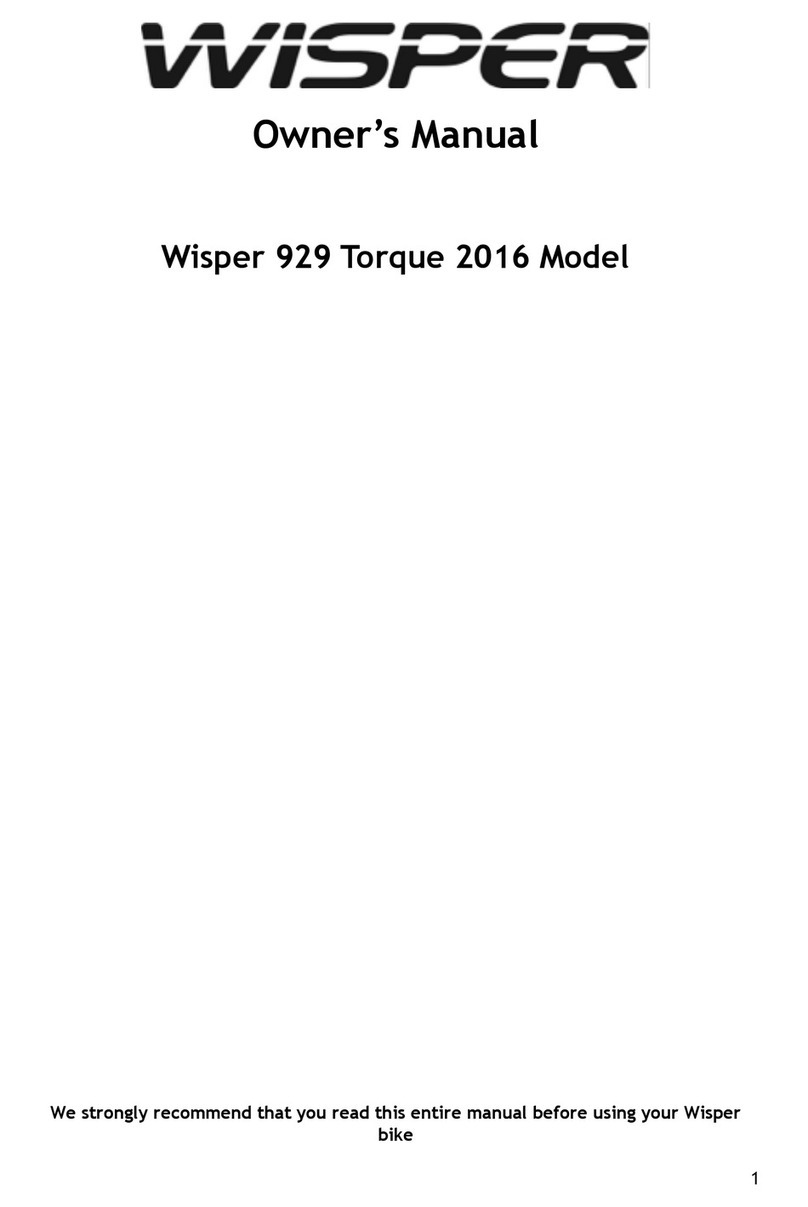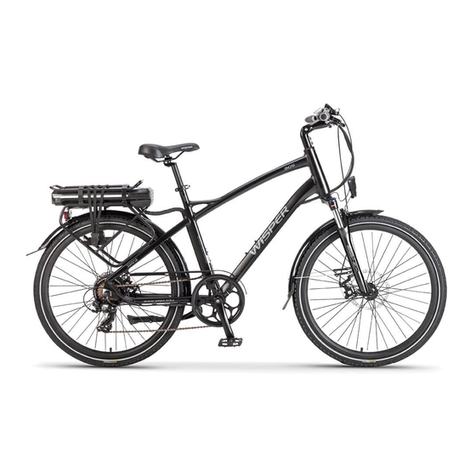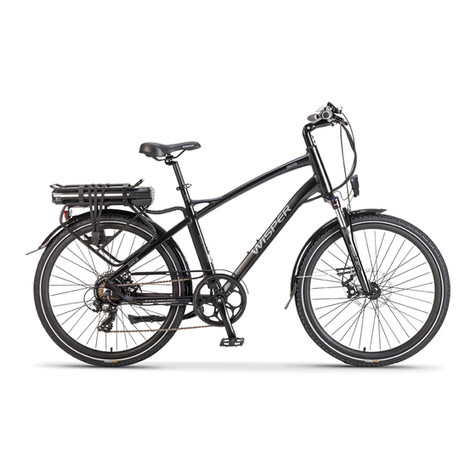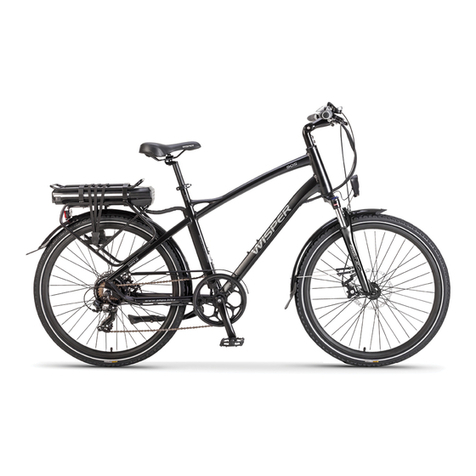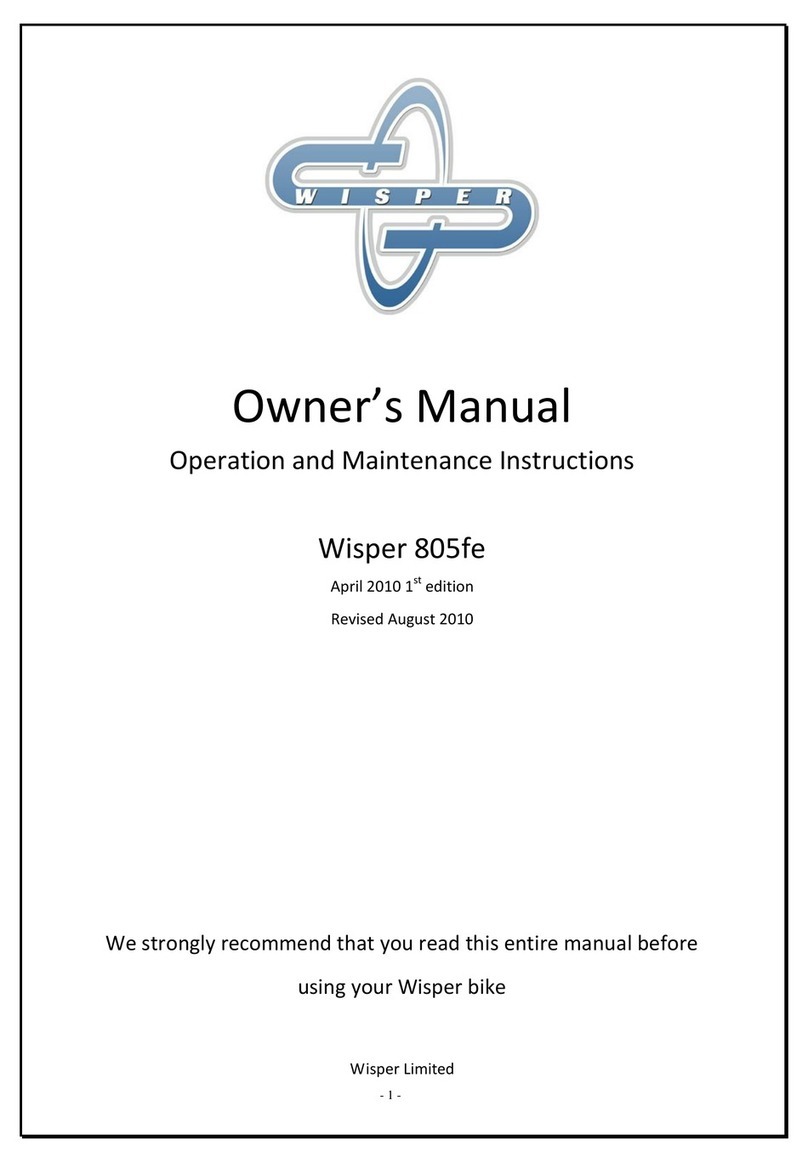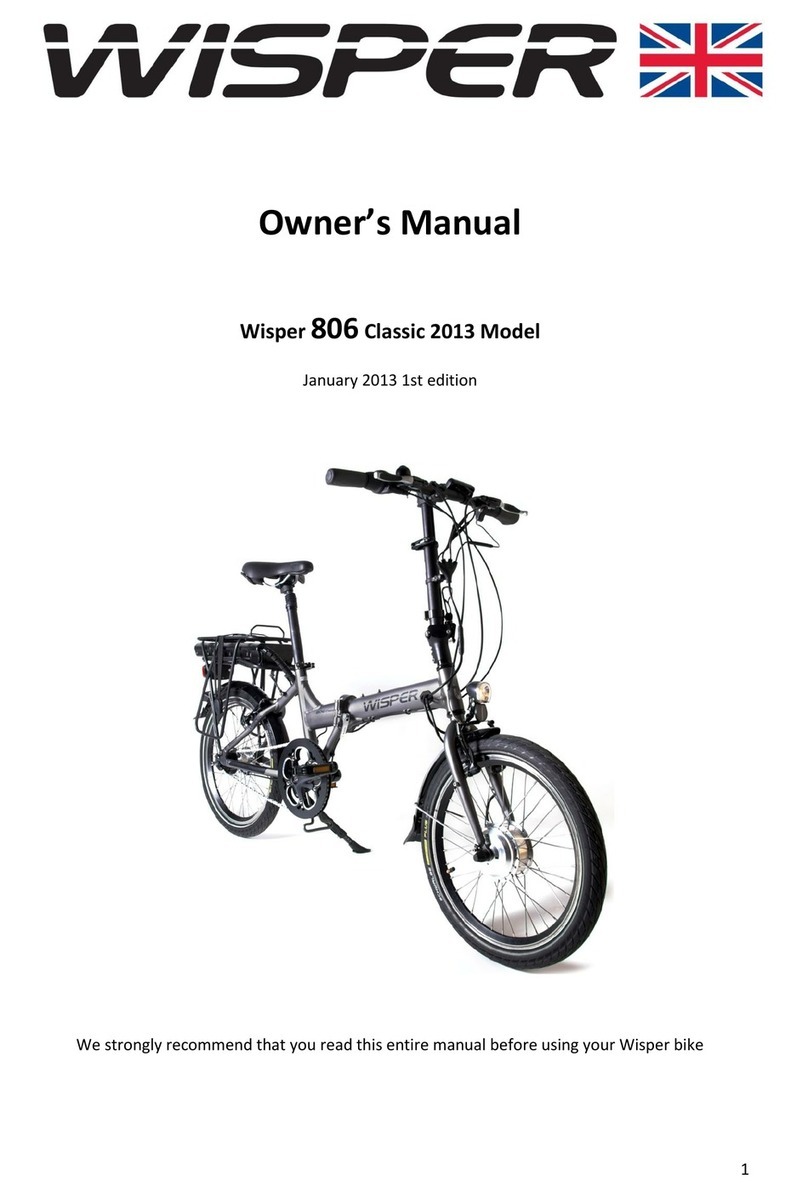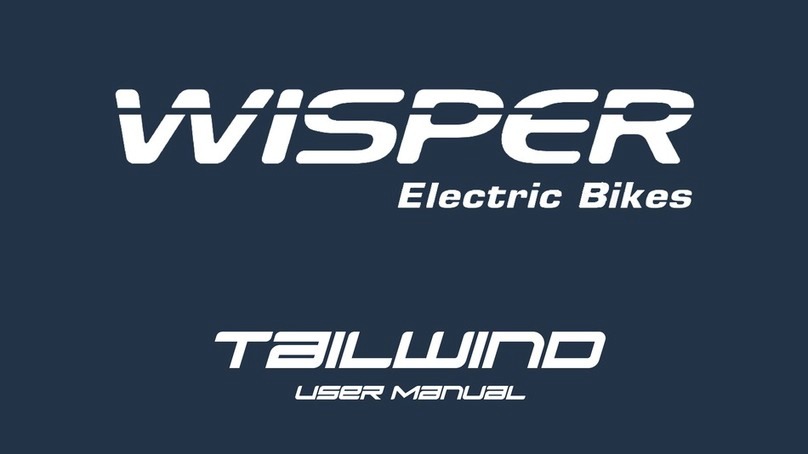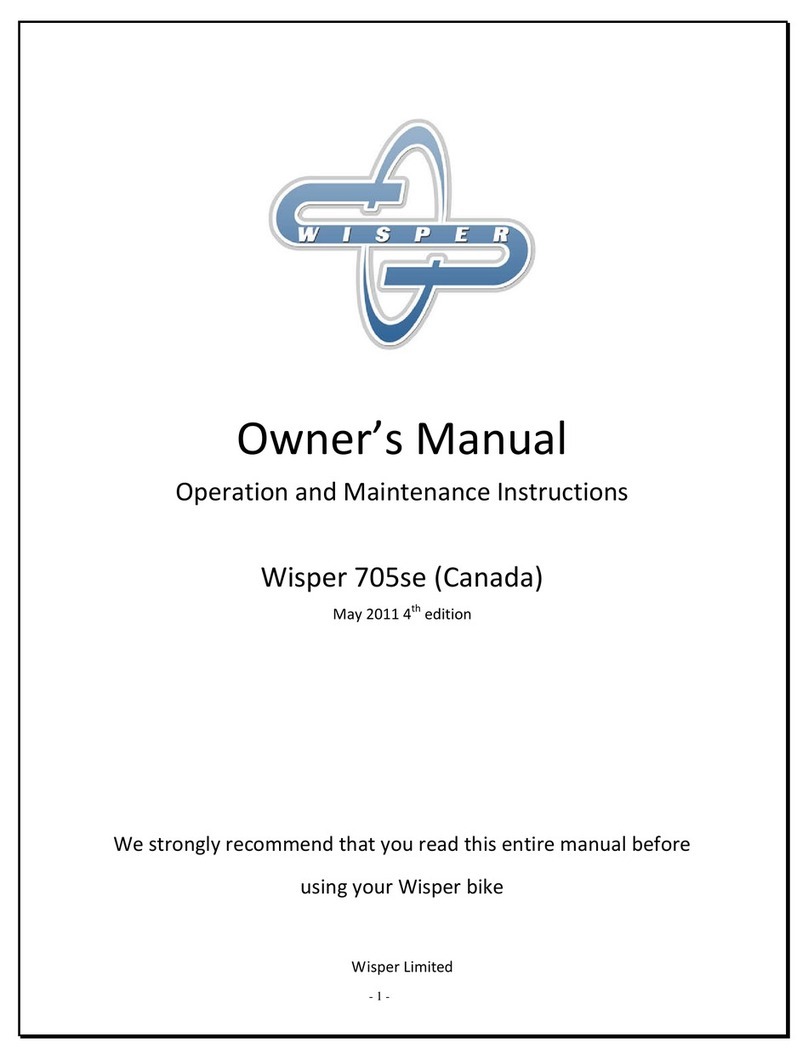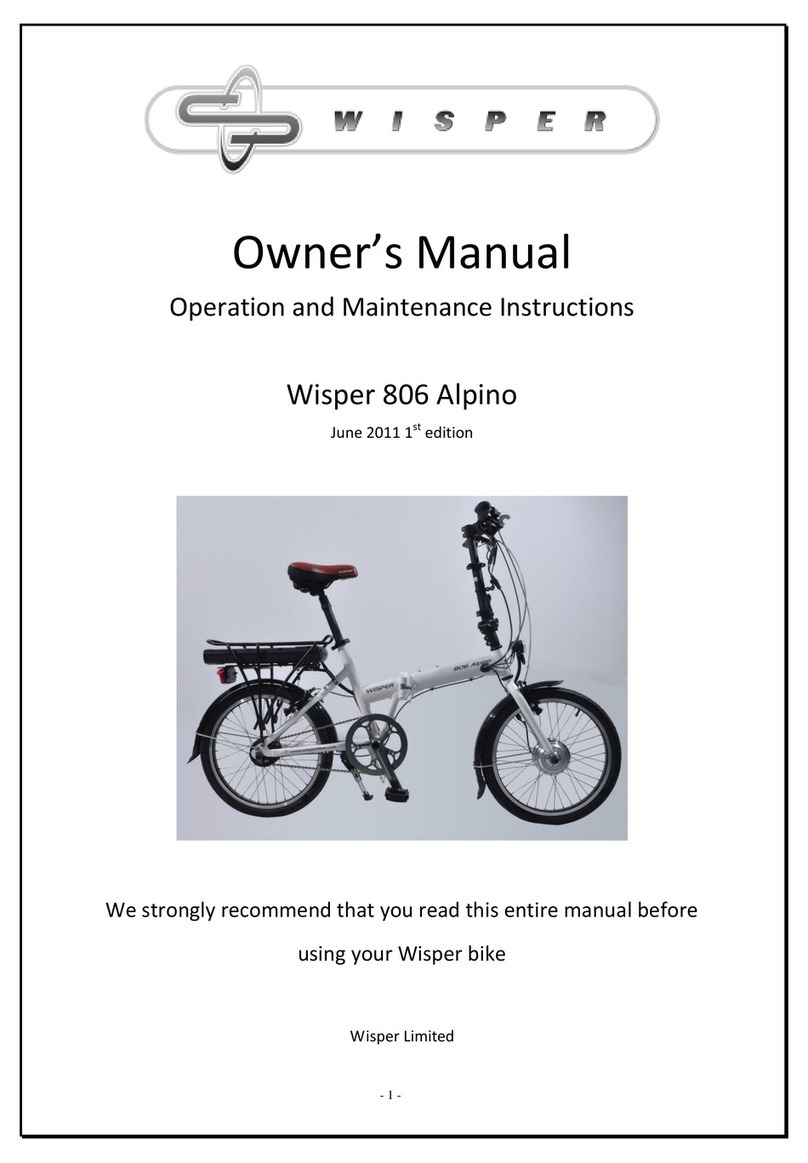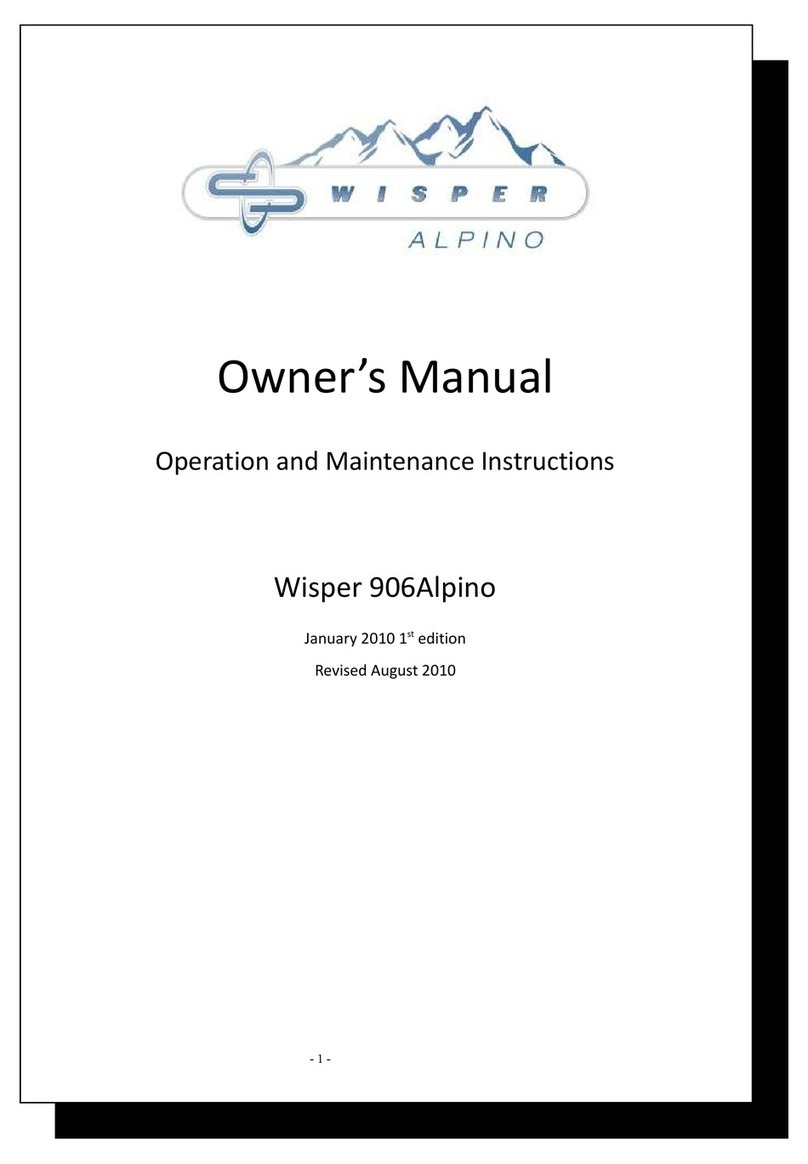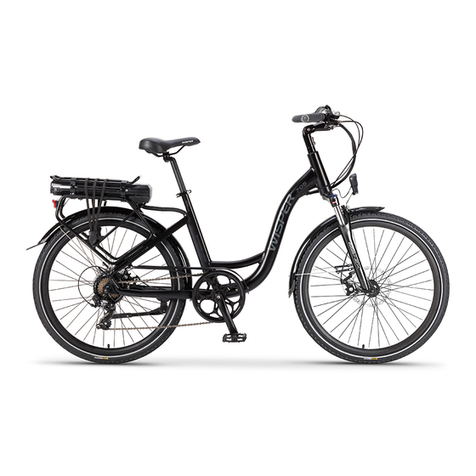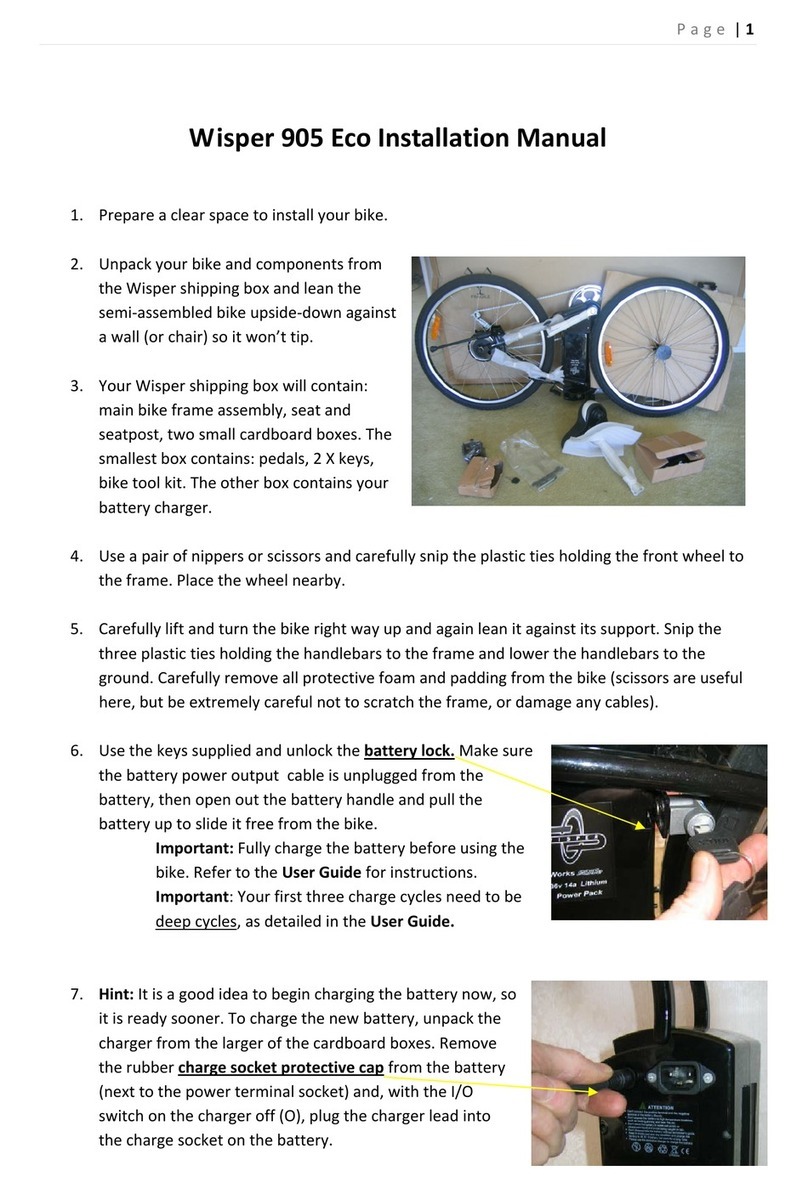disconnect the charger fro the ains before disconnecting the charger
fro the battery. It is possible that the battery will take up to 12 hours to
charge on the first three charges.
4.2 When charging the battery always do so in a well ventilated area.
4.3 Do not leave the charger connected to the ains when not in use.
5 Water
5.1 Your electric bicycle is rain and splash proof and can be used in all
weathers.
5.2 The electrical co ponents of the vehicle, such as otor, battery, and
controller, ust not be sub erged in water.
6 Maintenance and adjust ents
6.1 IMPORTANT! Do not atte pt to open the casings of the battery, otor or
controller it could be dangerous and all warrantees will beco e void. If
you experience a proble contact our service depart ent or your retailer.
6.2 Wheel spokes should be adjusted after 300 iles riding. Handlebar and saddle
tubes should never be raised beyond the axi u indicated by a safety
line around the tubes. The reco ended torque on the nuts is as follows:
(A)Front axle nuts. 46N.M
(B)Back axle nuts. 70N.M
(C)Steerer clamp bolts. 1 .6N.M (Refer 15.1 picture)
(D)Handlebar bolts. (18 to 20)N.M
(E) Seat pillar clamp nut/bolt. (5-8) N.M
(F) Brake cable anchor bolt. 5N.M
(G) Brake centre bolt. M6:11N.M
(H) Seat clamp nuts. 24N.M
(I) Crank axle nuts.R:42N.M L: 46N.M
(K) Gear shifter nuts.4N.M
(L) V brake caliper nuts. 10N.M
(M) Rear carrier nuts. 8N.M
(N) Mudguard bracket nuts.8N.M
Other nuts torque depends on the nuts volume. M4:2.5-4.0N.M M5:
4.0-6.0N.M M6:6.0-7.5N.M
6.3 Your bike has a rear derailleur that will auto atically tension your chain.
However if the chain beco es loose or frequently co es off the front
chainwheel please seek advice fro your dealer.
6.4 The brake leavers should lock the wheels when co pressed half way between
their open position and touching the handle bars. When they need
adjusting please follow instructions below.
- 7 -
